How can I make a residual plot according to the following (what are y_hat and e here)?

Is this a form of residual plot as well?
beeflm=lm(PBE ~ CBE + PPO + CPO + PFO +DINC + CFO+RDINC+RFP+YEAR, data = beef)
summary(beeflm)
qqnorm(residuals(beeflm))
#plot(beeflm) #in manuals I have seen they use this but it gives me multiple plot
or is this one correct?
plot(beeflm$residuals,beeflm$fitted.values)
I know through the comments that plot(beeflm,which=1) is correct but according to the stated question I should use matplot but I receive the following error:
matplot(beeflm,which=1,
+ main = "Beef: residual plot",
+ ylab = expression(e[i]), # only 1st is taken
+ xlab = expression(hat(y[i])))
Error in xy.coords(x, y, xlabel, ylabel, log = log) :
(list) object cannot be coerced to type 'double'
And when I use plot I receive the following error:
plot(beeflm,which=1,main="Beef: residual plot",ylab = expression(e[i]),xlab = expression(hat(y[i])))
Error in plot.default(yh, r, xlab = l.fit, ylab = "Residuals", main = main, :
formal argument "xlab" matched by multiple actual arguments
Also do you know what does the following mean? Any example for illustrating this (or external link)?

Beef data is like the following:

Here's the beef data.frame:
YEAR PBE CBE PPO CPO PFO DINC CFO RDINC RFP
1 1925 59.7 58.6 60.5 65.8 65.8 51.4 90.9 68.5 877
2 1926 59.7 59.4 63.3 63.3 68.0 52.6 92.1 69.6 899
3 1927 63.0 53.7 59.9 66.8 65.5 52.1 90.9 70.2 883
4 1928 71.0 48.1 56.3 69.9 64.8 52.7 90.9 71.9 884
5 1929 71.0 49.0 55.0 68.7 65.6 55.1 91.1 75.2 895
6 1930 74.2 48.2 59.6 66.1 62.4 48.8 90.7 68.3 874
7 1931 72.1 47.9 57.0 67.4 51.4 41.5 90.0 64.0 791
8 1932 79.0 46.0 49.5 69.7 42.8 31.4 87.8 53.9 733
9 1933 73.1 50.8 47.3 68.7 41.6 29.4 88.0 53.2 752
10 1934 70.2 55.2 56.6 62.2 46.4 33.2 89.1 58.0 811
11 1935 82.2 52.2 73.9 47.7 49.7 37.0 87.3 63.2 847
12 1936 68.4 57.3 64.4 54.4 50.1 41.8 90.5 70.5 845
13 1937 73.0 54.4 62.2 55.0 52.1 44.5 90.4 72.5 849
14 1938 70.2 53.6 59.9 57.4 48.4 40.8 90.6 67.8 803
15 1939 67.8 53.9 51.0 63.9 47.1 43.5 93.8 73.2 793
16 1940 63.4 54.2 41.5 72.4 47.8 46.5 95.5 77.6 798
17 1941 56.0 60.0 43.9 67.4 52.2 56.3 97.5 89.5 830